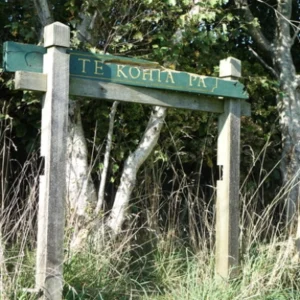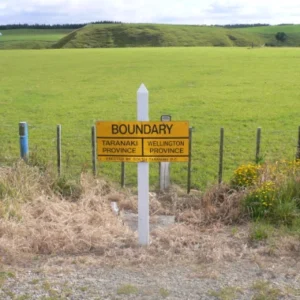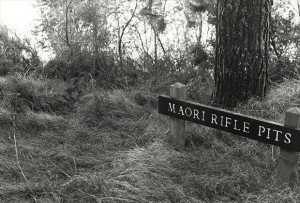An important part of researching and writing about the New Zealand Wars (or history in general) is to read and research documents. 
Documents, letters, official papers, newspapers and diaries – this type of material is called the primary evidence because it was created at the same time as the events being studied.
Literature that is created much later by historians is called the secondary evidence. You can look at some of the New Zealand Wars secondary evidence here – New Zealand Wars literature.
Researching documents
Reading documents can be quite time-consuming and challenging. But referring to the primary materials is an essential part of learning how to research and write history. Most of the Government documents relating to the New Zealand Wars are now readily available online, like The Appendices of the Journals of the House of Representatives (AJHR) and the New Zealand Parliamentary Debates (NZPD).
For research and study purposes, these two important sources provide a huge array of detailed information. The Appendices of the Journals of the House of Representatives are composed of official government papers since 1858 bound into these annual volumes. You can research and write about many aspects of the New Zealand Wars by looking through these papers.
The purpose of this page is to show how research questions can be studied through the use of documents like these. The 3 questions are –
A Understanding causes by examining documents – eg North Taranaki
B Gaining insights into the state of Māori communities after the wars – eg via Census material
C Examining the legal basis of government actions eg the land confiscations, by reading the legislation.
A THE ORIGINS OF THE WAR IN NORTH TARANAKI 1860- 1861 – understanding causes by examining documents

The dilapidated sign that once stood on the site of Te Kohia Pā, Waitara, where the first shots were fired on 17 March 1860 (the sign is no longer there).
Below are 3 documents which make up a collection of papers published in the AJHR dealing with the origins of war breaking out in Waitara. This is a very long file of papers, and they do take some reading and digesting. But they are interesting and are essential to research / writing / understanding some of the issues that preceded the outbreak of the war in North Taranaki. If you find the text too small to read, just place your cursor over the document and right-click once, this should increase the document size.
1 Papers on the Taranaki Question 1839-1859 Pages 1-20:
2 Papers on the Taranaki Question 1839-1859, Pages 20-33:
# https://paperspast.natlib.govt.nz/parliamentary/AJHR1860-I.2.1.6.5/1
3 Further Papers on the Taranaki Question 1839-1859.
# https://paperspast.natlib.govt.nz/parliamentary/AJHR1860-I.2.1.6.6
B THE MĀORI POPULATION – gaining insights into the state of Māori communities after the wars

A road sign just south of Patea showing where the original boundary between the Provinces of Taranaki and Wellington used to run. The Provincial Governments were abolished in 1876.
Further Primary sources: Māori Census data
The Māori Census forms and returns are also an interesting source of information about Māori. Here is a good example Māori census material: the 1874 Māori Census returns. This was the first official census ever undertaken in order to count the Māori population. This census was only possible because the wars had finished in 1872. However, the census conclusions are interesting because they reveal the state of Māori after the wars, though do be aware, the data was largely based on estimates.
The reference for this source is: ‘Approximate Census of the Māori Population’, Appendices of the House of Representatives, 1874, G.-7, pp. 1-20.
Some of the issues and problems in dealing with census data as a primary source are discussed in a journal article written by Danny Keenan in 1995 entitled ‘Incontrovertible Fact, Notwithstanding Estimates : Maori People Observed in the Early Contact Period‘.
This article appeared in He Pukenga Korero, Koanga (Spring), 1995, Vol.1, pp. 54-64. He Pukenga Korero is the journal published by Māori Studies, Massey University.
C RESEARCH FOCUS – The basis of government policy – examining the legal basis of the land confiscations
Alternatively, you can directly access the legislation that gave rise to the iniquitous confiscations of Māori land after 1863 : the New Zealand Settlements Act 1863. This legislation was enacted on 3 December 1863 and, originally aimed at Waikato Māori, eventually extended across significant portions of the North Island – see Map of Confiscations, which appears on the awesome Te Ara website.

